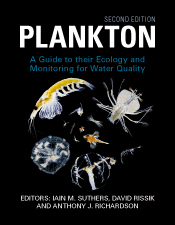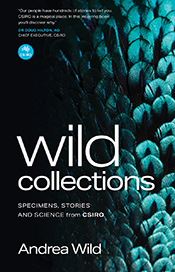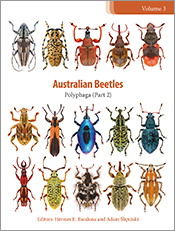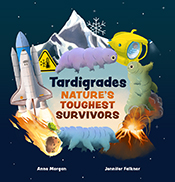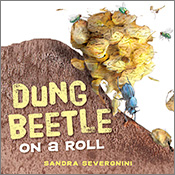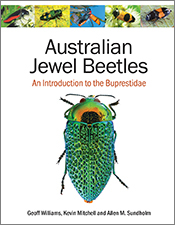Plankton
A Guide to Their Ecology and Monitoring for Water Quality
Second Edition Edited by: Iain M Suthers, David Rissik, Anthony J RichardsonA fully updated introduction to the biology, ecology and identification of plankton.
Healthy waterways and oceans are essential for our increasingly urbanised world. Yet monitoring water quality in aquatic environments is a challenge, as it varies from hour to hour due to stormwater and currents. Being at the base of the aquatic food web and present in huge numbers, plankton are strongly influenced by changes in environment and provide an indication of water quality integrated over days and weeks. Plankton are the aquatic version of a canary in a coal mine. They are also vital for our existence, providing not only food for fish, seabirds, seals and sharks, but producing oxygen, cycling nutrients, processing pollutants, and removing carbon dioxide from our atmosphere. + Full description
This second edition of Plankton is a fully updated introduction to the biology, ecology and identification of plankton and their use in monitoring water quality. It includes expanded, illustrated descriptions of all major groups of freshwater, coastal and marine phytoplankton and zooplankton and a new chapter on teaching science using plankton. Best practice methods for plankton sampling and monitoring programs are presented using case studies, along with explanations of how to analyse and interpret sampling data.
Plankton is an invaluable reference for teachers and students, environmental managers, ecologists, estuary and catchment management committees, and coastal engineers.
- Short descriptionNews
Sales in Australia and New Zealand only. Elsewhere, this title is available through CRC Press [external link].
Reviews
"Nowadays, when all, although piecemeal, information is available in the internet, [it] is unusual to find a book with comprehensive information to start on a subject. This is what Plankton: A Guide to Their Ecology and Monitoring for Water Quality, 2nd edn does, to provide the reader with a useful guide to start on plankton studies, either as an educational activity, monitoring for agencies or even the initial steps of advanced research."
Xavier Irigoien, Journal of Plankton Research 41(5), September 2019
"The second pressing of this book is very welcome, and I encourage it to be used widely as an educational and reference tool for all scientists that step into the realm of plankton."
Ryan Baring, AMSA Bulletin #208, June 2021
Details
Hardback | April 2019 | $ 79.99ISBN: 9781486308798 | 248 pages | 270 x 210 mm
Publisher: CSIRO Publishing
Illustrations, Photographs
ePDF | April 2019
ISBN: 9781486308804
Publisher: CSIRO Publishing
Available from eRetailers
ePUB | April 2019
ISBN: 9781486308811
Publisher: CSIRO Publishing
Available from eRetailers
Features
- Fully revised and expanded edition with a new chapter on teaching science (K-12 and tertiary studies) using plankton
- Covers all major freshwater, coastal and marine phytoplankton and zooplankton groups and provides a list of up-to-date references
- Explains the role of plankton in aquatic ecosystems and its usefulness as a water quality indicator
- Describes best practice methods for plankton sampling and monitoring programs using case studies
- Demonstrates how to analyse and interpret the results of sampling programs
Contents
PrefaceList of contributors
Acknowledgements
1: The importance of plankton
Iain M. Suthers, Anthony J. Richardson and David Rissik
2: Plankton processes and the environment
Iain M. Suthers, Anna M. Redden, Lee Bowling, Tsuyoshi Kobayashi and David Rissik
3: Use of plankton for management
David Rissik, Penelope Ajani, Lee Bowling, Mark Gibbs, Tsuyoshi Kobayashi, Kylie Pitt, Anthony J. Richardson and Iain M. Suthers
4: Sampling methods for plankton
Iain M. Suthers, Lee Bowling, Tsuyoshi Kobayashi and David Rissik
5: Freshwater phytoplankton: diversity and biology
Lee Bowling
6: Coastal and marine phytoplankton: diversity and ecology
Penelope Ajani, Ruth Eriksen and David Rissik
7: Freshwater zooplankton: diversity and biology
Tsuyoshi Kobayashi, Ian A.E. Bayly, Russell J. Shiel and Anthony G. Miskiewicz
8: Coastal and marine zooplankton: identification, biology and ecology
Anthony J. Richardson, Julian Uribe-Palomino, Anita Slotwinski, Frank Coman, Anthony G. Miskiewicz, Peter C. Rothlisberg, Jock W. Young and Iain M. Suthers
9: Educating with plankton
Timothy Roe, Anthony J. Richardson and Iain M. Suthers
Epilogue
Glossary of general terms
Index
View the full table of contents. (PDF, 50kb)
Authors
Iain M. Suthers is a marine scientist at the University of New South Wales and the Sydney Institute of Marine Science, specialising in the ecology of plankton and larval fish. Over the past few decades he has led or participated in many research voyages focused on the East Australian Current. Every year he leads students to Smiths Lake field camp, 3 hours drive north of Sydney, to evaluate the coastal ecosystem.
David Rissik works as a consultant for BMT and has an adjunct position with the Australian Rivers Institute and the National Climate Change Adaptation Research Facility at Griffith University. He has worked in the area of coastal zone management for many years, and in monitoring and reporting on water quality and ecosystem health of estuarine and coastal systems. He has a strong interest in social-ecological systems and the role of research in decision making. He now works on climate change risk and climate adaptation.
Anthony J. Richardson is a mathematical ecologist at the University of Queensland and CSIRO Oceans and Atmosphere. Anthony was captivated with plankton during his PhD and now runs an Australia-wide plankton monitoring survey. His research modelling marine ecosystems and analysing plankton datasets brings his passions for biology and mathematics together. Anthony believes plankton are beautiful, vital, under-studied, and sensitive indicators of ecosystem health.

